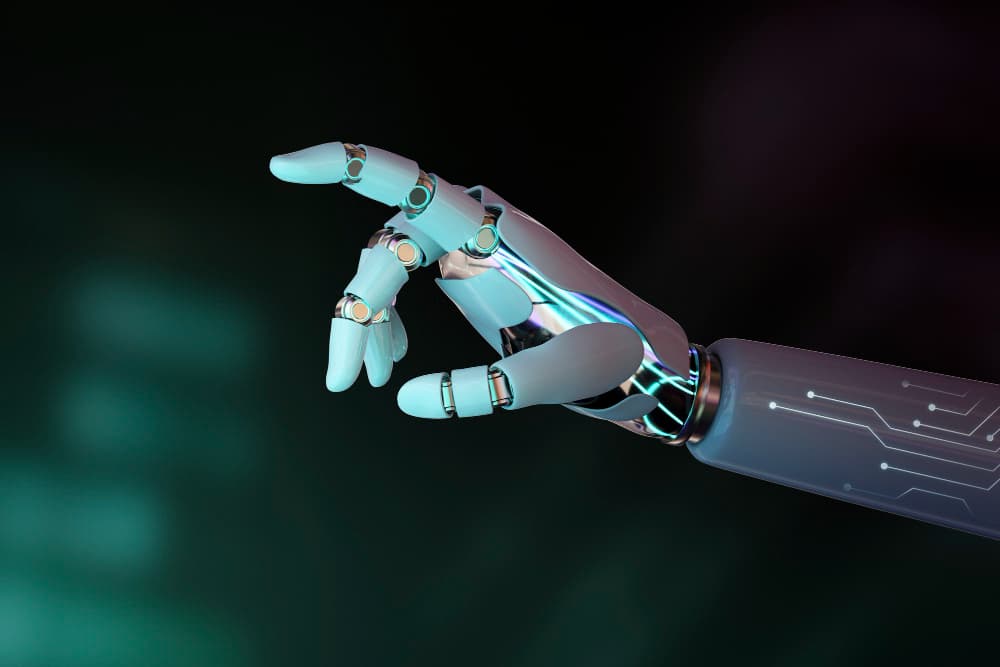As educators, we must not only teach technical skills but also instill the critical thinking and ethical reasoning necessary for navigating an AI-driven world.
In an age where the boundaries of imagination are being redefined, the intersection of immersive technologies like Extended Reality (XR) and Artificial Intelligence (AI) offers a captivating glimpse into the future of education. Picture a world where students can traverse ancient ruins, engage with historical figures, or experiment with complex scientific concepts—all within a virtual realm that feels strikingly real.
Leading the charge in this educational revolution is an innovative visionary named James Hutson, whose work embodies the transformative power of XR and AI. With a passion for merging creativity and technology, he has taken on the role of Lead XR Disruptor at Lindenwood University, focusing on how these immersive tools can engage students in deeper, more meaningful ways. Drawing from a rich background in art history and game design, he is uniquely positioned to create interactive environments that foster both intellectual curiosity and emotional engagement.
Creating Immersive and Interactive Learning Environments
James Hutson’s motivation for focusing on the intersection of Extended Reality (XR) and education arises from the transformative potential these technologies have in creating immersive and interactive learning environments that go beyond traditional pedagogical models. Upon assuming the role of Lead XR Disruptor, he recognized that immersive technologies like Virtual Reality (VR) and Augmented Reality (AR) could introduce a new dimension to learning, particularly in how students engage with complex subject matter. His background in art history, visual culture, and interdisciplinary research highlighted the inherent value of experiential learning, and he sees XR as a medium that enables students to not only consume content but also interact with it, fostering deeper cognitive and emotional connections. Furthermore, the rapid advancements in immersive technologies and their increasing accessibility provide a unique opportunity to shape the future of education through experiences that are both scalable and adaptable across various disciplines.
Igniting Immersive Learning
James Hutson’s background in art history and game design uniquely positions him to integrate emerging technologies like XR into educational frameworks through a blend of creativity, narrative structure, and visual engagement. His study of art history has equipped him to consider the cultural, historical, and aesthetic contexts of the visual experience, which is essential for designing XR environments that are both intellectually stimulating and emotionally resonant. Meanwhile, his experience in game design has emphasized the importance of interactivity, user experience, and engagement—critical components of effective educational technologies. Together, these disciplines inform his approach to creating immersive learning experiences that are visually compelling and pedagogically sound. In the XR and Gaming Lab at Lindenwood, he focuses on developing serious games and simulations that merge art with technology, engaging students in ways that traditional media cannot. This allows students to interact with historical sites, perform scientific experiments, or simulate real-world challenges within a controlled, virtual space.
Improving Learning Outcomes and Engagement
James notes that XR technologies have profoundly transformed learning experiences across multiple disciplines at Lindenwood University. One standout example is in art history, where students utilize VR to explore ancient ruins and iconic artworks in immersive environments, providing a level of engagement far beyond traditional textbooks or slideshows. Another notable project from the XR and Gaming Lab involved developing an interactive simulation for healthcare students, enabling them to practice complex procedures in a risk-free, virtual environment. These immersive simulations allow for repetition and experiential learning, enhancing retention and deepening understanding. Additionally, serious gaming applications have been used to teach complex subjects such as climate science and history, where students engage in role-playing scenarios that challenge them to solve real-world problems. The lab’s human-subject research also explores how immersive environments can improve learning outcomes and engagement, particularly for students with diverse learning styles.
Enhancing Educational Accessibility Bottom of Form
James emphasizes that ensuring accessibility and inclusivity in AI initiatives is a central pillar of the Human-Centered AI programming at Lindenwood. One approach taken by him and his team involves designing AI-driven learning tools that are adaptive, allowing for personalized learning experiences tailored to each student’s unique needs. This adaptability ensures that the technology meets students where they are, regardless of their learning styles, cognitive abilities, or socio-economic backgrounds. For instance, the AI-enhanced learning platforms provide real-time feedback and customizable learning pathways that adjust to individual student progress. Additionally, the team focuses on inclusivity by ensuring these technologies are available on a wide range of devices, from high-end VR headsets to mobile phones, enabling learners from various socio-economic backgrounds to participate. Ethical considerations, such as transparency and equity, also guide their AI development processes, ensuring that the technologies are not only effective but also serve to dismantle, rather than exacerbate, barriers to education.
Pushing Educational Boundaries
James explains that fostering collaboration among research partners involves creating an open, interdisciplinary environment that encourages innovation through shared goals and a commitment to pushing the boundaries of what is possible. One standout partnership that exemplifies this ethos is the collaboration with the healthcare department to develop VR simulations for training nursing students. This project brought together experts in healthcare, game design, and AI to create an immersive, interactive training platform that allows students to practice medical procedures in a virtual environment. The interdisciplinary nature of this collaboration—combining knowledge from healthcare with cutting-edge XR technology—enabled them to create a tool that not only advances healthcare education but also sets a precedent for how immersive technologies can be used in other fields.
Charting a Path to Inclusive Innovation
James identifies one of the most significant challenges when integrating AI and XR into educational frameworks as ensuring that these technologies are scalable and accessible to a broad range of students and faculty. There is often resistance to adopting new technologies, especially when there is a steep learning curve or concerns about costs and infrastructure. To address these challenges, he emphasizes the importance of strategic alignment between technological integration and pedagogical objectives, ensuring that the tools developed serve clear educational purposes. Additionally, by offering training programs for faculty and investing in easily accessible hardware, they have been able to lower barriers to entry. Ethical concerns, particularly around data privacy and the equitable use of AI, are also critical challenges faced. To tackle these, the team incorporates strict ethical guidelines into their AI systems, ensuring transparency and equity in their application.
Blending Minds and Machines
James, as Editor-in-Chief, is particularly excited about the increasing focus on interdisciplinary approaches to educational technology, where fields like neuroscience, artificial intelligence, and immersive realities converge to create new ways of understanding and enhancing learning. He sees the rapid evolution of AI in adaptive learning systems and its potential to democratize education through personalized learning experiences as a topic that holds great promise. Another exciting trend for him is the exploration of ethical AI, where researchers are developing frameworks that ensure technology enhances rather than detracts from inclusivity and equity. Finally, he notes that the integration of immersive realities in education is pushing the boundaries of what is possible in virtual learning environments, allowing students to engage with content in deeply experiential ways.
James elaborates that the Immersive Arts and Culture Hub, alongside the XR and Gaming Lab, serves as a focal point for interdisciplinary research and innovation at Lindenwood University. Their mission is to leverage immersive technologies to create new avenues for academic research, education, and industry collaboration. These spaces are designed not only to advance technological innovation but also to foster an environment where art, history, and culture can intersect with emerging technologies in meaningful ways. The lab has become a hub for human-subject research, allowing the team to explore how immersive experiences impact learning, memory, and emotional engagement. In terms of impact, they have observed how these immersive environments can radically transform how students learn, offering more dynamic and engaging ways to interact with material across disciplines.
Expanding the Horizons of Artistic Innovation
James explains that immersive technologies can profoundly enhance creativity and engagement in the arts by allowing artists and students to interact with their work in entirely new ways. For example, in art history, VR can transport students into recreated historical environments or enable them to experience artworks at scale in ways that would be impossible in a traditional classroom. For practicing artists, XR tools provide new mediums for expression—artists can sculpt in 3D spaces, experiment with digital compositions in AR, or create interactive installations that respond to user input. This creates an environment where creativity is no longer confined by physical limitations, opening up new possibilities for artistic innovation and audience engagement.
Forging Future-ready Minds
James asserts that educators play a critical role in preparing students for an AI-driven future by equipping them with not only technical skills but also the cognitive flexibility to adapt to rapidly changing technological landscapes. In addition to understanding AI systems, students will need to develop strong problem-solving skills, critical thinking, and creativity. Equally important are skills in ethical reasoning and global citizenship, as the integration of AI into society raises complex questions about equity, privacy, and the role of human judgment in decision-making. He emphasizes that educators should focus on interdisciplinary learning, encouraging students to engage with both the technical and humanistic aspects of AI.
Addressing Systemic Challenges
James explains that his work with CrowdDoing, a global platform for social impact, aligns closely with his academic and research pursuits, particularly in sustainability and mental health. One project he is particularly proud of involves developing immersive simulations aimed at raising awareness about climate change. These simulations allow users to experience the impact of environmental decisions in real time, fostering a deeper understanding of sustainability issues. Another significant project focuses on using AI to promote mental well-being, especially in underserved communities. By applying his research in human-centered AI and immersive realities to these projects, he aims to contribute solutions that address systemic challenges while also advancing the field of social impact technology.
Paving the Way for a Vibrant Educational Future
James looks ahead and envisions XR and AI becoming integral components of education, not as supplementary tools but as fundamental elements of a modern, immersive learning environment. His aspiration is to continue leading initiatives that push the boundaries of how these technologies can be applied to solve complex, real-world problems. Specifically, he aims to establish an AI research center that serves as a hub for interdisciplinary collaboration, bringing together diverse fields to create innovative, human-centered solutions. In the future, he sees himself as both a facilitator of technological innovation and an advocate for ensuring that these advancements are accessible, ethical, and beneficial for all learners.







